There are significant differences between CO2 laser marking and traditional marking methods such as thermal transfer, screen printing, engraving, inkjet printing, etc. The following is a detailed comparison of the two, covering advantages and disadvantages, applicable materials, cost, efficiency and application scenarios.
1. Marking accuracy
CO2 laser marking:
Advantages: High accuracy and resolution, able to clearly mark complex patterns and text.
Disadvantages: May be limited to some very small details, but overall superior performance.
Traditional marking:
Advantages: Provides reasonable results on simple marks such as text or basic patterns.
Disadvantages: Accuracy and detail processing are usually not as good as laser marking, especially for complex designs.
2. Material applicability
CO2 laser marking:
Advantages: Applicable to a variety of non-metallic materials (such as plastics, wood, paper, acrylic, leather, etc.).
Disadvantages: Surface treatment is required on some metal materials (such as aluminum and iron).
Traditional marking:
Advantages: Screen printing and engraving can be widely used in metals and some plastic materials.
Disadvantages: Applicability to environmentally friendly materials may be limited, especially for some thermal transfer and inkjet inks that require substrates.
3. Durability and permanence
CO2 laser marking:
Advantages: The marking is wear-resistant and corrosion-resistant, and the color is usually not easy to fade, which is suitable for occasions where long-term marking is required.
Disadvantages: There may still be certain limitations in extreme environments (such as high temperatures or strong acids).
Traditional marking:
Advantages: Engraving and some screen printing marks are relatively durable.
Disadvantages: Thermal transfer and inkjet marks are easy to fade or wear, and have poor durability.
4. Cost
CO2 laser marking:
Advantages: Although the initial equipment investment is high, it is more economical in the long run due to the lack of consumables and lower maintenance costs, especially in large-scale production.
Disadvantages: The initial investment is large, suitable for applications with high requirements for marking accuracy and quality.
Traditional marking:
Advantages: The equipment purchase and maintenance costs are usually low, suitable for small-scale marking.
Disadvantages: In large-scale production, the long-term cost of consumables and labor may increase.
5. Efficiency
CO2 laser marking:
Advantages: Fast marking speed for a variety of materials, suitable for automated production lines.
Disadvantages: In some cases (such as large area color filling), the marking speed may not be as fast as traditional methods.
Traditional marking:
Advantages: Screen printing and thermal transfer are generally more efficient in large quantities and simple marking.
Disadvantages: Long preparation and calibration time for complex patterns, low efficiency.
6. Flexibility
CO2 laser marking:
Advantages: Extremely high flexibility, the ability to quickly change designs, very suitable for personalized needs.
Disadvantages: For mass production, appropriate adjustments and optimizations may be required to maintain efficiency.
Traditional marking:
Advantages: Suitable for large-scale production, especially on colorful patterns.
Disadvantages: Complex template making, and high modification costs once the design is determined.
CO2 laser marking is particularly suitable for applications that require long-term identification and high quality due to its high precision, durability and wide material applicability. Although the initial investment is high, it has advantages in long-term production efficiency and maintenance costs. In contrast, traditional marking methods may be more attractive in terms of cost, ease of operation and high-volume production efficiency, but they are often inferior to laser marking in terms of marking quality and flexibility. Which method to choose depends on the specific application requirements, budget and production environment. Click here to consult Suntop Laser now to recommend the right laser marking machine for you.
How Effective Is the CO2 Laser Marking? CO2 laser marking usually has the following significant characteristics:
1. Fineness and clarity
High precision: CO2 laser marking can achieve extremely high precision and can clearly mark a variety of complex patterns, text and barcodes.
High clarity: The patterns generated by laser marking have clear edges and rich details, which are suitable for demanding identification applications.
2. Color change
Color change: For some materials (such as plexiglass, leather, etc.), laser processing can produce obvious color changes, forming a unique visual effect.
Sharp contrast: The color of the mark usually forms a strong contrast with the material base, which is easier to identify.
3. Durability
Persistent marking: The effect of laser marking is usually very wear-resistant and corrosion-resistant, and can resist the influence of various chemicals and environmental factors, suitable for occasions requiring long-term use.
Not easy to fade: Unlike traditional inkjet or thermal transfer marking, laser marking is not easy to fade or damage, especially when used outdoors or in harsh environments.
4. Customizability
Flexible design: The solution can be quickly changed according to customer needs, supporting personalized customization and fast proofing, suitable for small batch production.
Variety of variations: By adjusting the laser power, speed and frequency, a variety of different effects can be achieved, such as deep marking, cutting, engraving, etc.
In general, CO2 laser marking has excellent results and is suitable for a variety of applications, providing high quality and durability. Whether in industrial production, product identification or personalized customization, CO2 laser marking has demonstrated its wide application potential and excellent results. If you have further questions about the specific needs and effects of laser marking, click here to contact Suntop Laser immediately to evaluate whether it meets your specific needs.
How to Choose the Right Laser Marker? Choosing the right laser marking machine involves multiple factors. Here are some key considerations to help you make an informed decision:
1. Application requirements
Material type: First, determine the material that needs to be marked. Common materials include metal, plastic, leather, wood, glass, etc. Different materials may require different types of lasers (such as CO2 laser, fiber laser, etc.).
Marking type: Select according to the type of marking required, such as deep marking, cutting, engraving or burning effect.
2. Laser type
CO2 laser: Suitable for non-metallic materials such as wood, acrylic, leather, etc., with good marking effect.
Fiber laser: Suitable for metal materials, especially when processing metals such as stainless steel and aluminum.
UV laser: Suitable for almost all materials, especially high-precision marking needs.
3. Power selection
Laser power: Power directly affects the marking speed and effect. Generally speaking, the greater the power, the faster the processing speed, and the faster the marking of thicker materials. But the greater the power, the better. Choose the appropriate power according to actual needs.
Application scenarios: Small batches or personalized customization may choose lower-power equipment, while industrial mass production requires high-power equipment.
4. Marking speed
Production efficiency: Set the marking speed according to production needs. The faster the marking speed, the more quantity can be processed per unit time. Choose equipment that suits your production efficiency needs.
5. Control system
Software compatibility: Make sure the control system of the laser marking machine is compatible with your existing design software, such as AutoCAD, CorelDRAW, etc.
Ease of use: Choosing a simple and user-friendly interface will help improve work efficiency.
6. Working size and area
Marking range: Choose a suitable working area and choose equipment according to the size and shape of your product to ensure that the equipment can cover the required marking area.
7. Budget
Purchase cost: Make a reasonable purchase plan based on the company's budget and choose cost-effective equipment.
Maintenance cost: The maintenance and consumables cost of the equipment are also key considerations. Choose a laser marking machine that is simple to maintain and has a reasonable cost.
8. Brand and after-sales service
Brand reputation: Choose a well-known brand to get better product quality and technical support.
After-sales service: Confirm whether the supplier provides good after-sales service, including equipment maintenance, repair and technical support.
9. Test and sample
Test machine and sample: If possible, apply for an on-site demonstration of the equipment or sample marking to evaluate whether the performance of the equipment meets the needs.
Considering the above factors comprehensively, you can better choose the laser marking machine that suits your needs. Click here to contact Suntop Laser now to learn more.
Suntop Laser is a professional laser equipment manufacturer, and its products have a high reputation and market share in the fields of laser marking, laser cutting, laser welding and laser cleaning. Some advantages of choosing Suntop laser equipment include:
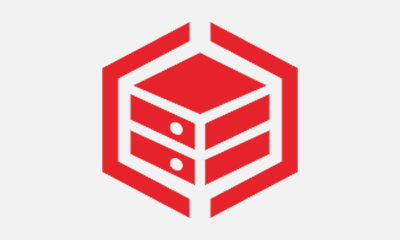
Technical strength
Suntop Laser has a strong R&D team and technical strength, and continuously innovates R&D and launches competitive laser equipment products.
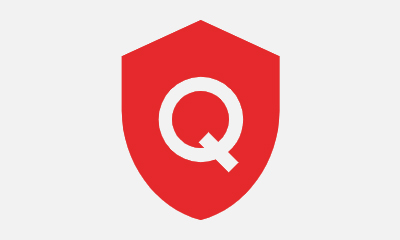
Quality assurance
Suntop laser equipment uses high-quality core components and stable laser sources to ensure product quality and stability.
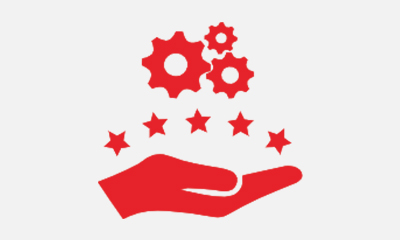
Customization service
Suntop Laser provides personalized customization services, customizes laser equipment according to customer needs, and meets the needs of customers in different application scenarios.

After-sales service
Suntop laser equipment provides a professional after-sales service team to provide customers with timely technical support, training and maintenance services to ensure the normal operation of the equipment.
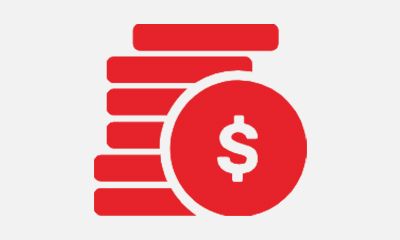
Cost-effectiveness
Suntop laser equipment has a good performance and price ratio, affordable price, high cost performance, and saves costs for customers.
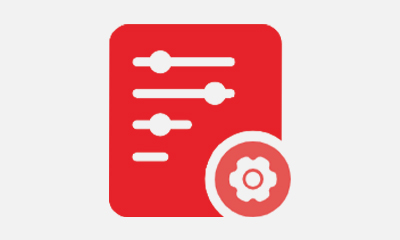
Wide application
Suntop laser equipment is suitable for multiple industries, including electronics, automobiles, medical devices, toys, packaging and other fields, meeting the laser processing needs of different industries.
Choosing Suntop laser equipment is a reliable choice, which can provide high-quality laser equipment, professional customization services and high-quality after-sales service, helping customers solve problems in the field of laser processing and improve production efficiency and product quality. If you need laser equipment, you can consider choosing Suntop laser equipment to meet your laser processing needs.
CO2 laser marking machines play an increasingly important role in all walks of life. Due to its unique advantages (such as high precision, high efficiency, flexibility and non-contact processing), this technology is widely used in many fields such as industry, medical, advertising, packaging, art and personalized customization.
Considering the multiple advantages of CO2 laser marking technology, enterprises should actively introduce this technology when formulating production strategies to improve product quality, expand market competitiveness and reduce production costs. With this advanced marking method, enterprises can not only increase the added value of products, but also meet increasingly stringent market demands and customer expectations.
The introduction of CO2 laser marking technology will help enterprises stand out in the fierce market competition and achieve sustainable development. In the ever-changing market environment, the application of CO2 laser marking technology will bring opportunities for innovation and growth to enterprises and drive them to higher achievements.
















































